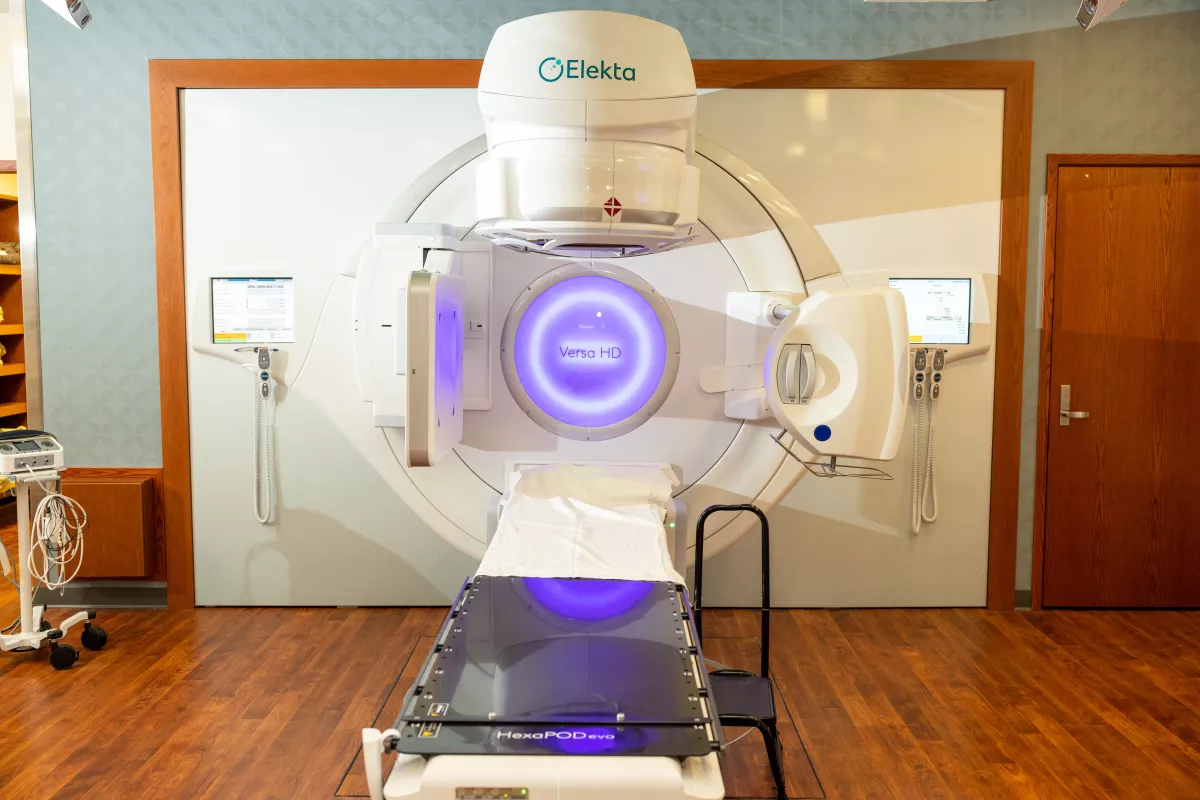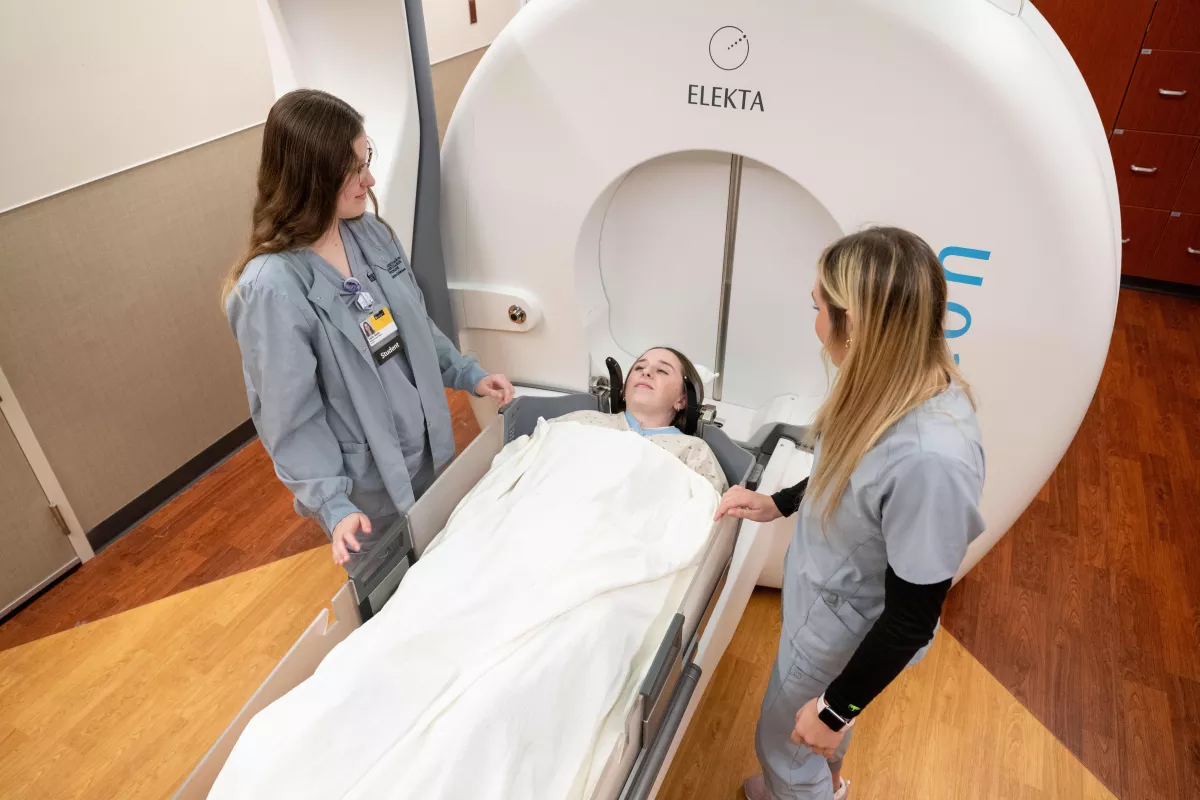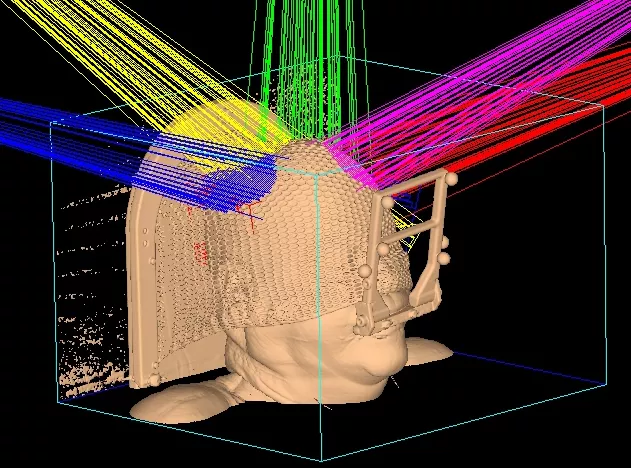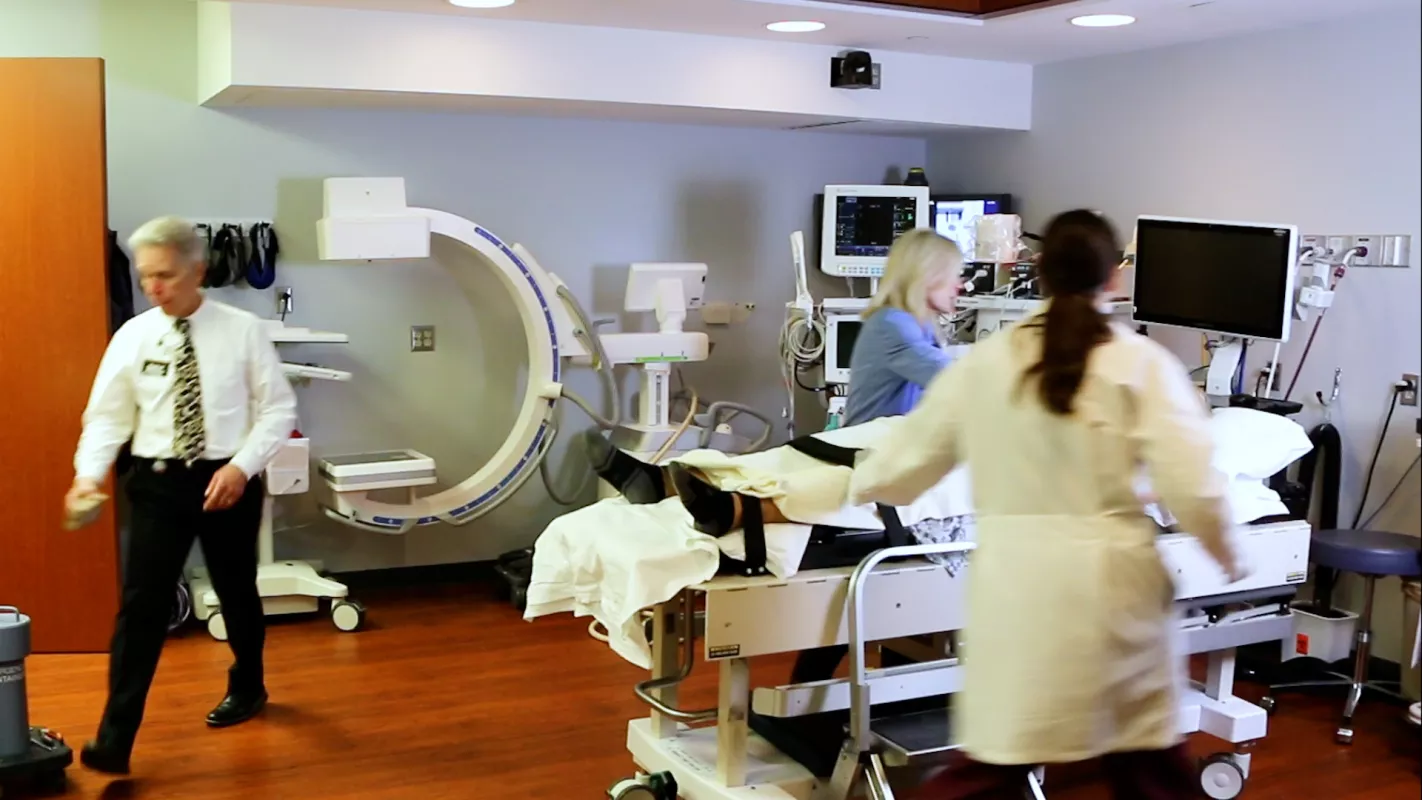



Photo 2: Gamma Knife
Photo 3: Stereotactic radiosurgery beam arrangement
Photo 4: The brachytherapy suite
External Beam Radiation Therapy
External beam radiation therapy (EBRT) is delivered using a device like a linear accelerator, gamma knife, or proton machine to direct high energy radiation to the treatment area. The beams are delivered from outside of the body hence the “external” name.
EBRT Techniques
Volumetric modulated arc therapy (VMAT)
This technique delivers the treatment beams in less time than on older “step and shoot” Linacs that needed to stop to deliver each radiation dose. VMAT shapes the beam while moving in one continuous motion while treating the patient. Our patients spend less time on the treatment table so there is less likelihood of movement during the treatment process.
Image guided radiation therapy (IGRT)
Image guided radiation therapy is the procedure used for most patients treated with EBRT. Before all treatments, patients are simulated (or “simmed” for short), using a PET/CT or MRI machine. This shows where the tumor is located so that it can be accurately treated. Before every treatment the patient is imaged again to ensure the aiming point for the radiation beams is on-center.
Intensity modulated radiation therapy (IMRT)
The goal of intensity modulated radiation therapy is shaping the radiation dose to fit the shape of the tumor while missing the surrounding healthy tissue. This is achieved by varying or modulating the strength of the beam so that it is strongest where it strikes the tumor and weakest near the surrounding healthy tissues. The beam arrangement is made to fit the three-dimensional shape of the tumor. Each tumor is unique in shape so the advantage of IMRT is the flexibility in changing the strength and direction of the beam to closely match the shape of the tumor.
Stereotactic radiosurgery (SRS) and stereotactic body radiosurgery (SBRT)
Stereotactic radiosurgery and stereotactic body radiosurgery are extremely accurate techniques used to deliver very high doses of radiation to small tumors of the brain and body. The area to be treated is fully immobilized adding to the effectiveness of the treatment. Many of our SRS and SBRT treatments are delivered using our Gamma Knife.
Accelerated partial breast irradiation (APBI)
Accelerated partial breast irradiation (APBI) is offered as an option for women with early-stage breast cancer. Higher doses of radiation are delivered fewer times, reducing radiation exposure to the whole breast and surrounding organs. The chances of conserving the breast, while still effectively treating the tumor are much improved.
Total skin electron therapy (TSET)
Total skin electron therapy is used to treat a skin cancer called mycosis fungoides-a type of non-Hodgkin’s lymphoma. A very low intensity radiation beam is used to treat the entire skin surface. While this treatment is very effective, it requires the patient to have their eyes, nails, and feet shielded from the radiation so that they don’t receive an excess dose to sensitive tissues.
Brachytherapy or internally delivered radiation therapy
This technique uses a radioactive source to treat the site from within the body. Using this technique may allow for a higher dose to be delivered in a relatively short space of time and requires only a single visit or a single treatment compared to multiple treatments needed for EBRT.
Brachytherapy Techniques
MRI-guided HDR brachytherapy
tumor, the radioactive source is passed through the catheters to the tumor where it stays for a short amount of time. When the treatment is done, the catheters are removed so nothing stays in the body. Our department uses 3T magnetic resonance imaging (MRI) for HDR brachytherapy because it shows the soft tissue to be treated very clearly.
Eye plaque treatments
Used to treat some eye tumors, eye plaque brachytherapy involves the placement of tiny radioactive seeds (the size of a grain of rice), on the eyeball near the tumor in the eye. The seeds are placed inside a silicon cup that is held in place by a gold-plated cap (resembling a bottle top) that is attached to the eye. This procedure is performed under anesthesia and the eye plaques may remain in place for two to six days.